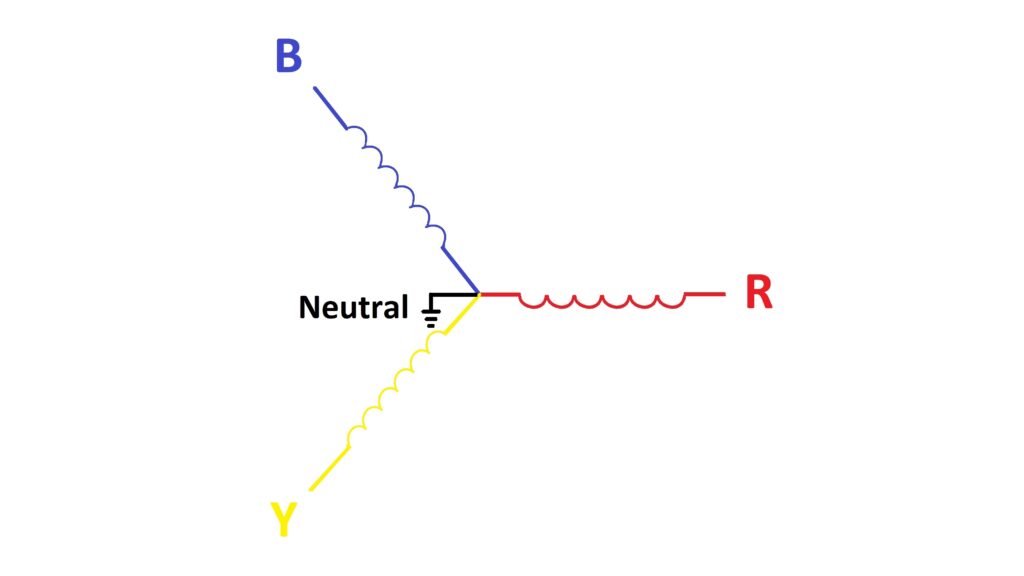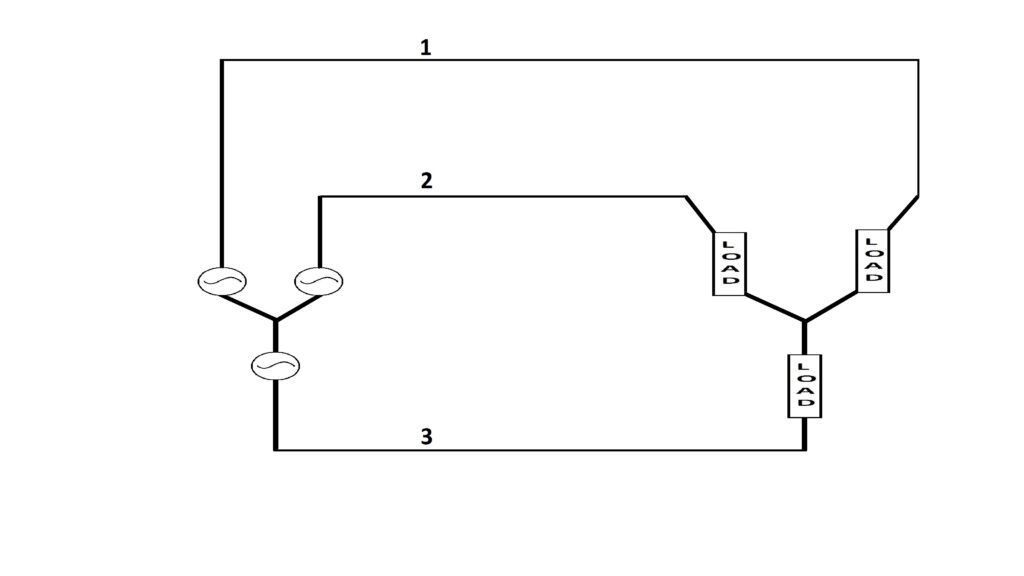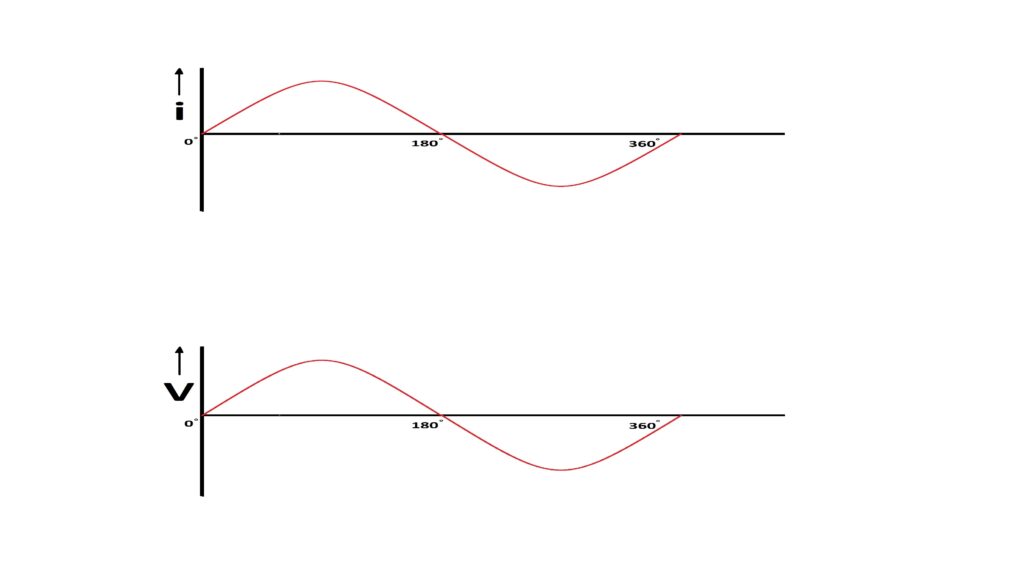Also, we will see, in star connected circuit, why there is no current in neutral? And does it hold practically also?
Let’s see!
Frequently we come across the terms such as star connection, delta connection, etc.
This is a Star Connection also called as y connection because it looks like y.

This is a Delta Connection.

As we can see, star or delta connections are done in a three-phase AC power system. As we know AC Power means alternating current power. But why do we use three-phase AC power instead of single-phase AC power? Let’s take an example. Here we can see there are three different loads to be supplied with power. These loads can be residential, commercial, or any other type of load. So we can supply single-phase power to each load. Here two conductors are required to feed each load with a single-phase power supply. Hence six conductors are required to feed all three loads.

However, if these loads are fed with a three-phase star-connected power supply, then
only four conductors will be required instead of six. One conductor for each
phase and one common conductor for the neutral point. Hence total of four
conductors. In balanced load conditions, there is no current through neutral.
So neutral conductor can be removed. Hence, from six conductors, we have come down to three conductors to feed three loads. So it is very economical to transmit three-phase power
instead of single-phase power since the same amount of power can be transmitted
with half number of conductors. Hence three-phase power is preferred over a
single phase.

Also, heavy industry machines work better on a three-phase power supply. For example, three-phase power can produce a rotating magnetic field which makes the three-phase induction motor self-start. Also, a three-phase system provides more power density. Hence industry point of view three-phase power supply plays a key role.
Now let’s see, why there is no current in neutral when the load is balanced?
For that consider waveforms of current and voltage of single-phase AC power. These are the waveforms of current & voltage. These are called sinusoidal waveforms.

Now let’s see the behavior of current and voltage in a three-phase AC power system. As we know there is a phase difference of 120 degrees between each phase in three-phase AC power. Whether it is star connected or delta connected. We can see both star and delta-connected systems. Here Y phase leads R phase by 120 degrees, B phase leads Y phase by 120 degrees and R phase leads B phase by 120 degrees.

Let’s see waveforms of current and voltage in a three-phase
AC power system. Let’s look at the waveforms of the current first. This is R
phase current waveform. This is Y phase current waveform which leads R phase by
120 degrees. And this is B phase waveform which leads Y phase by 120 degrees.
These are the waveforms of R Y B phase currents, with a phase difference of 120
degrees.
Now, if we consider any instance on the waveforms, we can
see the resultant value is zero. Currents of all three phases cancel out each
other at any given instance. For example, if we consider the peak of R phase
current, which is a amperes as shown in the diagram. But at the same instance,
Y phase current is -(a/2), and similarly B phase current is -(a/2). Hence the
addition of the currents of both Y and B phases is -a. Hence R phase current
gets canceled by currents of Y and B phases. Hence (+a) + (-a) = 0.

The same is the case with voltage waveforms. Hence when the system is in a balanced
condition, there is no current at the neutral point where all three phases are connected.

So ideally there is no current at the neutral point. But practically this is not the case. The system is not perfectly balanced at all times due to various reasons such as load conditions. Hence practically there is always a small amount of current flowing through neutral.
For power transmission, if the transformer is delta connected, only three conductors are required to transmit power. Also in the case of a star-connected power transformer, neutral is earthed locally and only three conductors are used to transmit power.